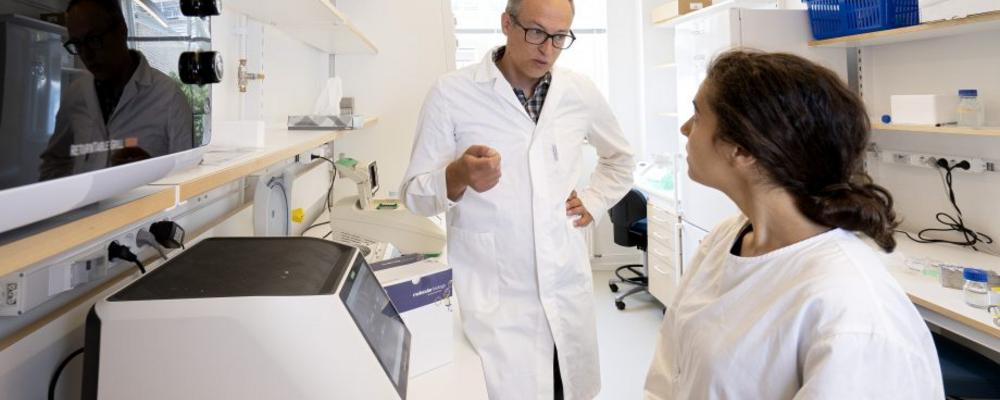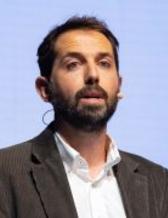
- Home
- News and events
- Find news
- Three applicants granted funding from Swedish Research Council’s call in natural and engineering sciences
Three applicants granted funding from Swedish Research Council’s call in natural and engineering sciences
Three researchers at Sahlgrenska Academy have been granted funding from the Swedish Research Council’s call in natural and engineering sciences. Juan Camuñas Soler received a starting grant, and Martin Ott and Justin Schneiderman both received project grants.
Joan Camuñas Soler is a newly hired researcher at the Institute of Biomedicine, where he will run fundamental diabetes research. He has now received SEK 4 million in starting funding from the Swedish Research Council’s subject area for natural and engineering sciences. The project connects the functions in the pancreatic islets of Langerhans with single-cell transcription in tissue, with the goal of identifying molecular biomarkers for diabetes.

“The pancreatic cells secrete the hormones insulin and glucagon at the right times to regulate blood sugar. In our project, we’ll be able to identify mechanisms that lead to diabetes when these cells aren’t functioning,” says Joan Camuñas Soler.
Protein synthesis in mitochondria
Martin Ott, professor of molecular cell biology at the Institute of Biomedicine, is receiving SEK 3.6 million for a project that will determine how the translation of mitochondrial DNA into protein is related to quality control for identifying erroneous proteins that must be removed in a process called proteolysis.
“What I think is most exciting about the project is that we’re going to look closer at how protein forms in mitochondria, and then at how its fate is determined. These proteins can either be built together in the respiratory chain or removed with the help of proteases when the proteins are erroneous or excessive,” says Martin Ott. “It will be fascinating to figure out how this works at the molecular level.”

Relevant to many diseases
Mitochondria convert chemical energy to ATP using the respiratory chain. The protein complexes that drive this vital process for energy transfer consist of proteins coded by DNA in both the cell nucleus and in the mitochondria. The mitochondrial genetic system is responsible for replication and transcription of the mitochondrial genome and for forming some of the subunits that build up the respiratory chain.
“Dysfunction in these processes is behind many human diseases, as well as aging. This makes it surprising that so little is known about how mitochondrial protein synthesis works,” says Martin Ott.
The project has particular focus on identifying how auxiliary factors interact with the mitochondrial ribosome to mediate co-translational protein quality control. Because the respiratory chain is crucial for cellular energy metabolism, defects in mitochondrial gene expression result in severe human diseases.
Perfekt tajming
J
Justin Schneiderman, senior lecturer at the Institute of Neuroscience and Physiology, is the principal applicant for a project to further develop magnetoencephalography (MEG) technology into a brand-new neuroimaging system that will lead to new discoveries and enhance understanding of the internal functions of the human brain. The technology enables mapping the functions of the human brain in real time and with a resolution exceeding what is possible with today’s technology in time and space.
The project has been awarded SEK 4,060,000 by the Swedish Research Council. It is being run in partnership with Kristina Malmgren and Mikael Elam and also includes researchers from both Chalmers University of Technology and Karolinska Institutet.

Justin Schneiderman is enthusiastic. “The timing of the project is absolutely perfect, because we now have all the pieces in place to use a brand-new, ultra-modern functional neuroimaging system here in Gothenburg”, he says, referring to the laboratory known as SahlBEC-lab, which will soon be opening at the Imaging and Intervention Center at Sahlgrenska University Hospital.
Opening a world-class laboratory
At SahlBEC-lab researchers will set up their existing and future equipment for measuring magnetic fields around the head with MEG. The hardware for these complex measurements has been developed in close collaboration with Dag Winkler and Thilo Bauch at Chalmers.
“Our goal is to begin testing on-scalp MEG recordings before the end of the year. We are fortunate to have access to an ultra-modern MEG system at Karolinska Institutet’s NatMEG center, which we will continue to use for many research and development activities together with lab director Daniel Lundqvist.”
Epilepsy and cardiovascular disease
The technology is expected to advance research on epilepsy, for example, where Kristina Malmgren and her colleagues will use MEG as part of their toolbox for safer, more effective epilepsy surgery. The technology is also expected to improve understanding of the disease processes behind epilepsy. Mikael Elam and his team will use MEG to improve understanding of how the brain’s reaction to stress contributes to long-term risk of developing cardiovascular disease. Another partner in the project is Rebecka Jörnsten at University of Gothenburg and Chalmers, who will analyze complex data from MEG using AI-based methods.
Text: ELIN LINDSTRÖM